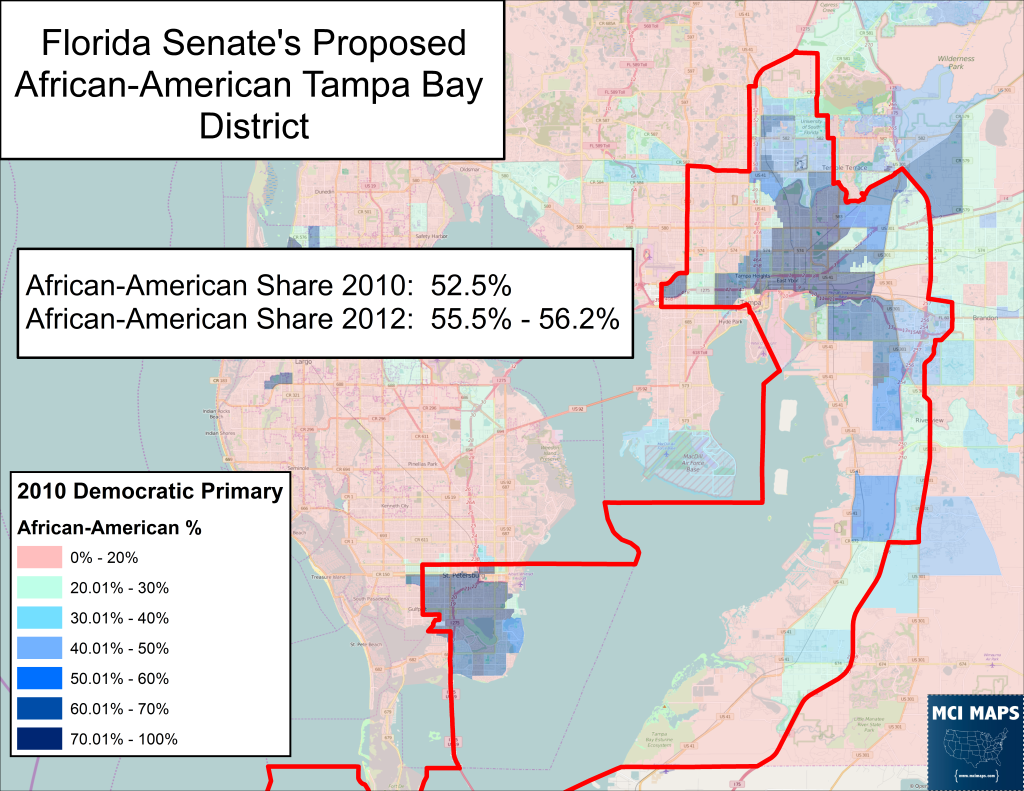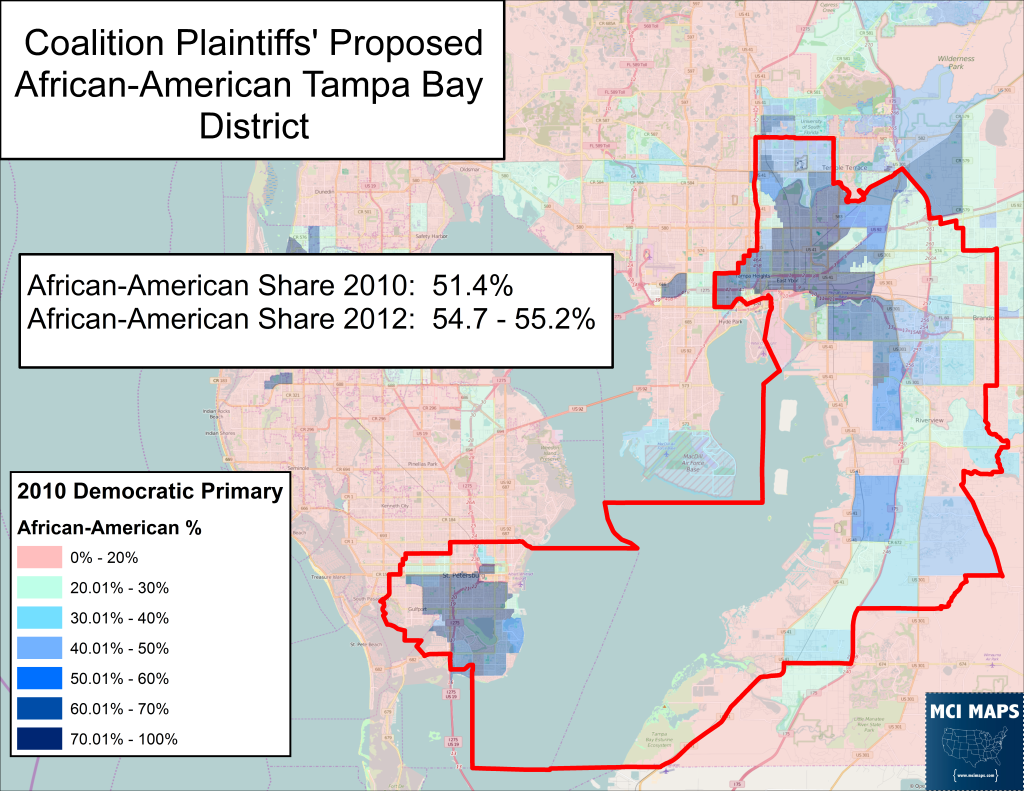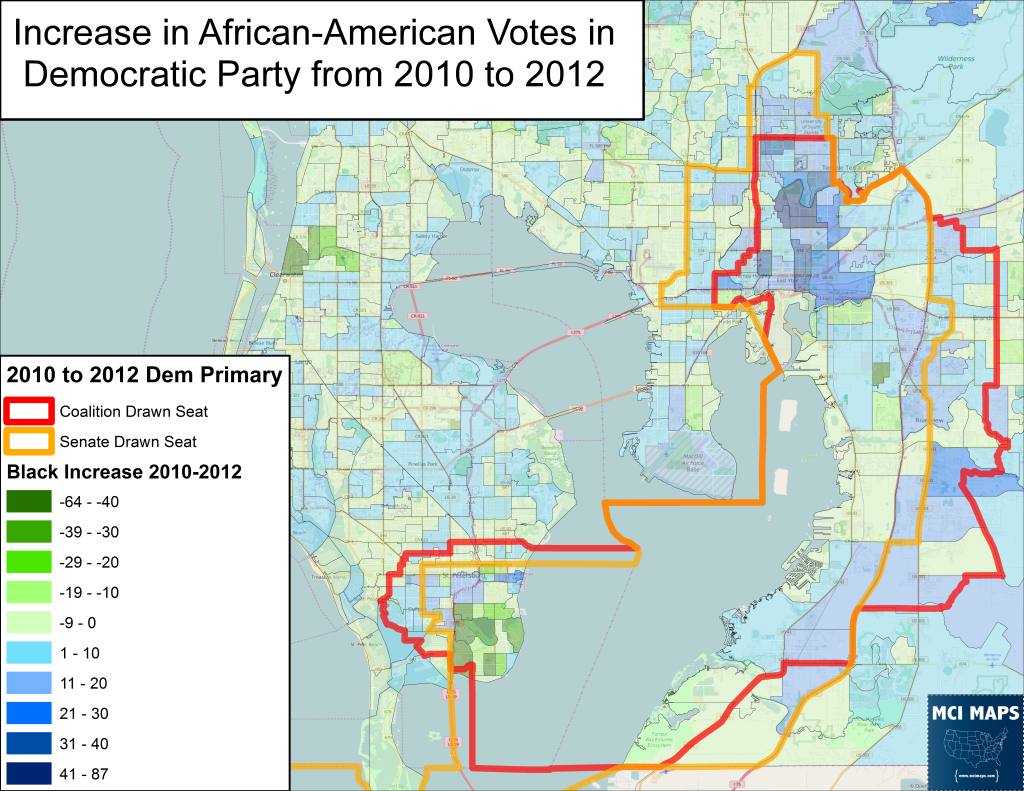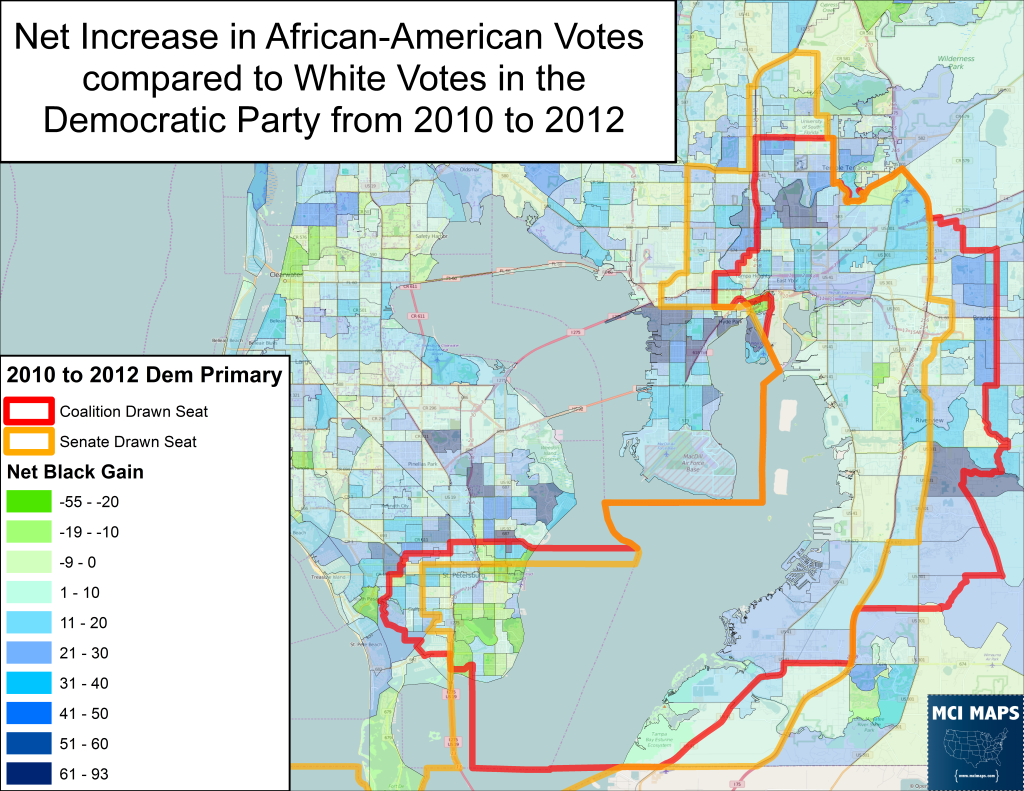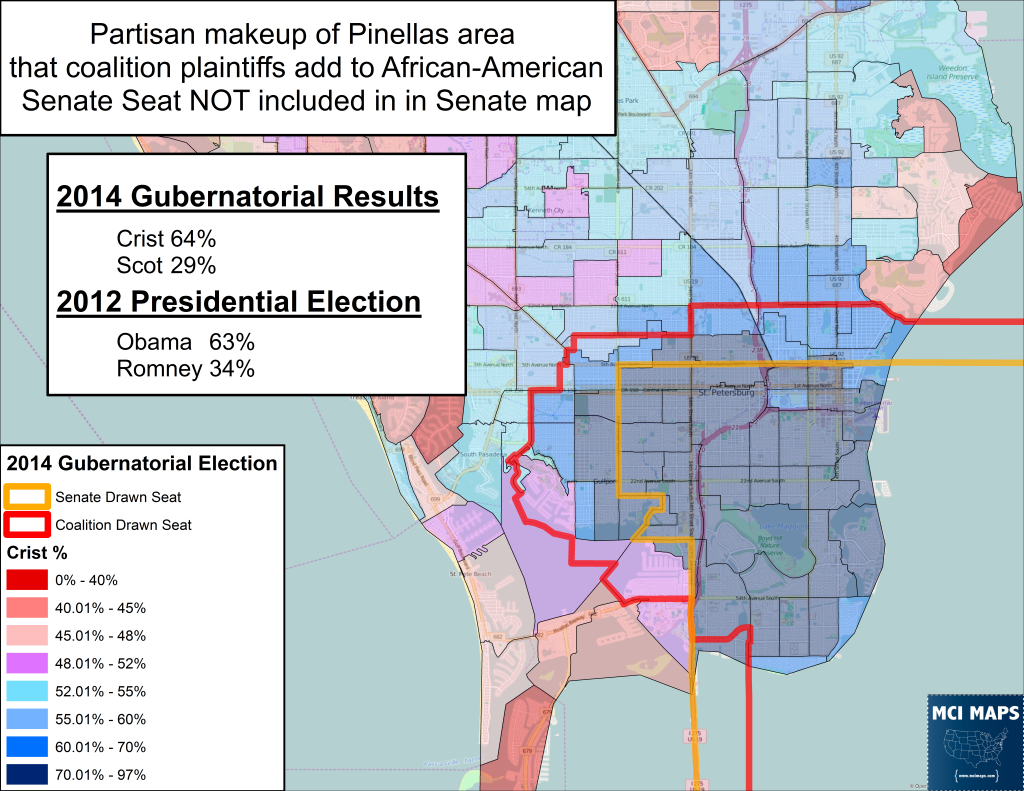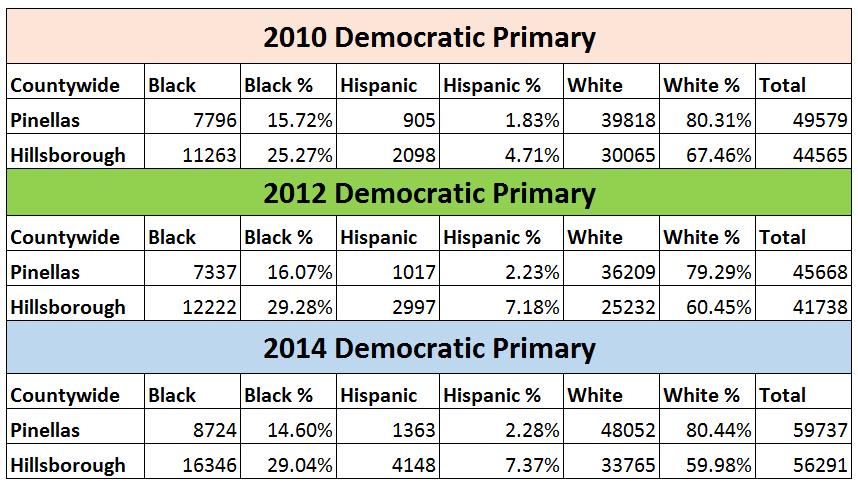If you were waiting for more evidence that an independent or bipartisan redistricting commission is needed in Florida, the last several months have proved it. Florida continues to have no finalized Congressional or State Senate maps, leaving local election officials hamstrung as they gear up for a Presidential Primary just around the corner. The Congressional Maps were just approved by the Supreme Court last week, however, a federal lawsuit from some parties may be brewing. Meanwhile the trial on the Senate maps has yet to even begin. The legislature loves to place the blame on ‘un-elected Judges’ and ‘partisan plaintiffs’ for our redistricting mess. However, the fault lies with the legislature itself and its blatant efforts to rig the game despite the 2010 Constitutional Amendments passed to stop gerrymandering. Even after the Florida Supreme Court smacked the legislature on redistricting and the Florida Senate admitted its 2012 Senate lines were unconstitutional, the top lawmakers in Tallahassee continue to do nothing but complain about the trials they have faced. They blamed the courts for interfering in their process, they blamed the voters for passing amendments that forced them to be fair, and they blamed the coalition plaintiffs that successfully sued them for having ‘partisan intent.’ Well, let’s talk about the supposed partisan intent of the coalition plaintiffs, who last week gave the Florida legislature an early Christmas present in Tampa Bay.
Tampa Bay Issues….. Again
When the coalition plaintiffs released their six proposals for the upcoming Senate redistricting trial, only two had an African-American district that did not cross the Tampa Bay. I wrote about the fact that crossing the Tampa Bay was not necessary to create an African-American district in the region. I also wrote that the move was being deliberately done by the legislature to save Republican Senator Jeff Brandes from having to run in a district that would have been heavily Democratic. The legislature argues that 2010 primary data shows a district must cross the bay to be majority African-American in the Democratic primary. As far back as August, I wrote about the fatal flaw of using old political data, as it did not reflect rapidly shifting demographics in the state. The plaintiffs finally agreed with this assessment and released maps during the legislative session that used 2012 and 2014 primary data. The plaintiffs even sent their data to the legislature, which stubbornly refused to use anything other than 2010 primary data.
However, just days before Thanksgiving, the plaintiffs withdrew their two maps that don’t cross the Tampa Bay and replaced them with a new map that does, leaving all five of their maps with an African-American seat that crosses open water. The plaintiffs said this was to “narrow the focus” to issues in Miami-Dade and elsewhere. In doing so, they have allowed one of the biggest remaining gerrymanders in the state to remain. Before 2012, crossing the bay was necessary to ensure an African-American district, I will give the legislature that. However, the updated data shows this is not necessary now, and our redistricting laws state that compactness is a factor in redistricting. There is nothing less compact than going over a large body of water. The plaintiffs have failed to uphold the very standards they have fought the legislature to preserve. Not only that, their proposed district is inferior to the one the legislature has put forward.
Let’s actually look at these proposed districts. The plan from the Senate keeps its incursion into Pinellas County at a minimum, only grabbing African-American areas. The map below shows the precincts of the Tampa Bay region color-coded by the African-American % in the 2010 primary (which I am using here because it is what the legislature uses). The border shows the proposed African-American district in the legislature’s proposed plan to the court.
I also want to note that these primary numbers are estimates using precinct boundaries, and final numbers may be off by a few 10ths of a percent, so don’t get too hung up on the decimals. I included a range for the 2012 primaries.
The 2010 primary is 52.5% African-American, but jumps to 55.5% in the 2012 primary. The district would elect an African-American in the Democratic primary and the seat is safe Democratic.
Now, let’s look at the plan in the coalition plaintiffs’ maps. Their district is less African-American because it grabs white precincts in Pinellas and misses African-Americans around the University of South Florida.
This map makes very little sense. The bulge in Pinellas makes the district less African-American and the city of St. Petersburg is still split. The plan adds Gulfport City into the seat, but considering Gulfport isn’t African-American, this has no effect on minority representation. Perhaps the district is more mathematically compact, but I have not, nor will I, check because that doesn’t matter. Redistricting isn’t just about compactness scores, it is about good civics. The compactness scores can be used to justify districts and cite evidence of gerrymandering, but they should not be the end-all be-all of this process. Any district that crosses the bay should keep its impact on Pinellas minimal.
It occurred to me that the plaintiffs, using updated data, may have had another reason for adding and subtracting the areas they did. Perhaps African-American votes had grown in the areas in question. The map below shows the raw increase in African-American votes in the Democratic Primary from 2010 to 2012. The borders of the legislature’s and coalition’s districts are shown. As the map shows, the areas of Pinellas that the coalition map took in did not see a large increase in African-American votes, while some areas the coalition didn’t take in but the legislature did (around USF), did see a more notable increase.
In fact, Pinellas saw a noticeable decline in votes cast (though the white vote fell as well).
I also made a map showing the net African-American increase compared to whites. This shows the coalition plan did grab some areas with a better net African-American increase (on the east end of the district) but missed other regions with decent net African-American vote.
The Pinellas region the coalition adds does not see a significant net African-American increase. Some precincts see a net rise and some precincts get whiter. This is why the coalition plaintiffs’ district is less African-American than the legislature’s proposal in both the 2012 and 2010 primary.
The coalition plaintiffs never should have abandoned the issue of crossing the bay. However, not only did they allow the legislature to maintain its gerrymander, but they produced a sub-par district as an alternative.
Are the Coalition Plaintiffs Partisans?
The legislature has spent a good deal of time insisting the coalition plaintiffs have partisan intent. The key evidence cited is that the maps produced by the plaintiffs have Obama winning 20 or 21 seats out of 40. The current Senate map has 17 districts won by Obama, while the plan submitted by the legislature stands at 17. Yes, the plaintiff maps would increase the number of Obama-won seats. However, wouldn’t a fair map naturally do this? The President won the state twice, so it isn’t illogical that a fair Senate map would see Obama winning half or just over half the seats.
How we get from 17 Obama seats to 20 or 21 is important. This is how the plaintiffs get to 20 or 21 Obama seats
- Instead of two Miami-Dade seats voting for Romney, none do. A plan with Obama winning all Dade seats is in the coalition maps AND several of the legislature’s base maps, so it is hardly a Democratic-exclusive idea
- A narrow Obama seat in Hillsborough. This happens depending on the lines and whether Hispanics are paired with African-Americans in the safe-Dem seat. At most, it is a district Obama won with under 50%, and the plaintiffs’ original lawsuit did accuse the legislature of packing Hispanic voters with African-Americans. It should also be noted that this district’s design is very similar to a district in Republican Representative Matt Caldwell’s proposed map
- A narrow Obama seat in Alachua and Marion. Only half of the plaintiff plans have the district voting for Obama. The legislature went out of its way to split Alachua in their proposal and gerrymandered the Senate seat in 2012. The plaintiff proposal to match Gainesville with Ocala, two cities close together and tied together by the highway, is not a crazy notion. The proposed district would either narrowly vote for or against Obama.
Most of these gains are creating swing districts that narrowly voted for the President. They are hardly guaranteed Democratic pickups or likely to result in an instant flip of the Florida legislature from Republican to Democratic. And again, I ask, does a plan that gave a majority, or a tie, of its seats to Obama, in a state Obama won twice, really sound like a gerrymander to you?
To prove this point further, let’s look at the coalition plaintiffs’ proposal for the African-American seat in Pinellas. As I pointed out, there is no reasonable justification for them to take white areas and pair them with African-Americans in Hillsborough. I opted to look at the partisan makeup of this extra territory the coalition plan took in.
The area that the coalition plaintiffs add to the African-American Senate seat is white, but it’s also very Democratic. Over 60% of the voters in that region voted for Barack Obama and Charlie Crist. The result makes the central Pinellas seat held by Republican Senator Jeff Brandes even less Democratic, taking it down to 49.6% Obama. The legislature’s plan has the district at 51.7% Obama. This proposals helps him by adding WHITE VOTERS to an African-American district. If the plaintiffs want to help Democrats, this is an odd way to do it.
The Legislature’s “Gold Standard” Data
During the redistricting special session, the legislature insisted, mainly through staff and their attorneys, that their data was perfectly acceptable and did not need to be updated. The redistricting staff insisted that they had tried to include 2012 primary data, but determined the process would take months to complete. There are three problems with this excuse. First, the time-frame is grossly overstated, as it would at best take a few weeks. Second, even if the time-frame is right, the legislature knew a special session was likely to happen months before-hand. And three, the legislature already updated the 2012 General Election Data when they did 2014 redistricting. Does anyone else find it odd that the legislature went ahead and added 2012 General Election Data, but not primary data? The general election data, which included 2012 Presidential Results, has only been used officially a few times, mostly to analyze turnout for Miami-Dade districts. The legislature has used this data to ensure Miami-Dade maintains 3 Hispanic-majority seats. So to recap, the legislature is using updated data for general election stats for minority seats, but didn’t think updating primary data was important for ensuring minorities can control primaries. The legislative staff should have updated 2012 primary data when it was also working on the 2012 general election data last year. Combining the two datasets at that time wouldn’t have added too much extra time to the process. At best, the legislature proved incompetent by only updating some datasets but not others, creating a double-standard when it comes to using updated data. At worst, the legislature purposely left primary data out to ensure they would have to cross the Tampa Bay and thus save a GOP Senator.
What was especially amusing was hearing House lawyer Jorge Ramos tell the redistricting committee that updated data for the primaries would not change things that much and was unnecessary. It was entertaining to hear a lawyer, who has lost every redistricting case before him in the last 2 years, lecture everyone else on proper data. Ramos’ argument that the updated data doesn’t change much is disproven just by a quick glance at Hillsborough’s Democratic primary makeup over the last three cycles.
While Pinellas has seen little African-American growth, Hillsborough has seen a stark rise, with the African-American percent increasing by 4% between 2010 and 2012 alone. A basic search reveals this data, and such a stark increase countywide should have alerted the legislature that updated data would be the proper thing to investigate. The fact is that the legislature never talked about updated primary data until they were pressed on it during the special session.
Ramos infamously said Florida was the “Gold Standard” of data when it came to redistricting. Well, while I give Florida credit for a good district builder program and heaps of data, saying it is the gold standard is a stretch. The fact is, data is only good if it’s constantly updated. The best medical textbook 5 years ago is already out of date. The legislature’s gold standard data is rusting on a shelf and looks more bronze each day.
Moving Forward
The people of Florida deserve a redistricting process better than the one they have seen. The legislature has continued to insult the intelligence of the voters by insisting they have done little to nothing wrong in the whole process. Meanwhile, bystanders have to watch and hope the coalition plaintiffs produce better options than those given by the legislature. While I consider the plaintiff maps lightyears ahead of the maps produced by the legislature, they are not without their flaws. The coalition plaintiffs’ latest move on Tampa Bay will leave the issue off the table for the redistricting trial. The issue is so contentious and dominated so much of the legislative debate that it deserves its day in court. However, little will be said about Tampa in the upcoming trial and there will be no witnesses and experts there to testify on it or the issue of why updated data wasn’t used in the region. This is just one issue and one part of the state, but it represents the flaw in the system; whatever issues are discussed depend entirely on what the legislature and the plaintiffs do. This issue and others would be hashed out much more productively in either a nonpartisan or bipartisan committee. When the next decade’s redistricting comes around, Florida must have a new system in place that does not rely on a pinky promise by the legislature to do the right thing or for an organization to sue if the legislature fails at its job. The 2018 or 2020 ballot needs to see a proposed amendment to Florida’s constitution that takes this issue out of the legislature’s hands. From the old days of the Pork Chop Gang, to Democratic gerrymanders in the 1980s, to Republican gerrymanders following, no Florida legislature has ever done redistricting in a fair manner. I, for one, am tired of giving them any more chances. It is time for a change.


